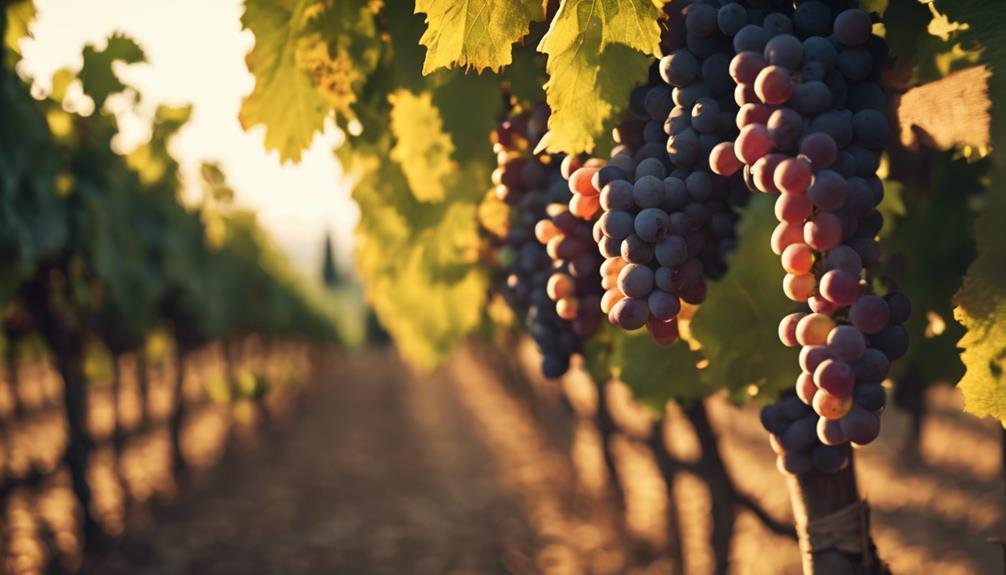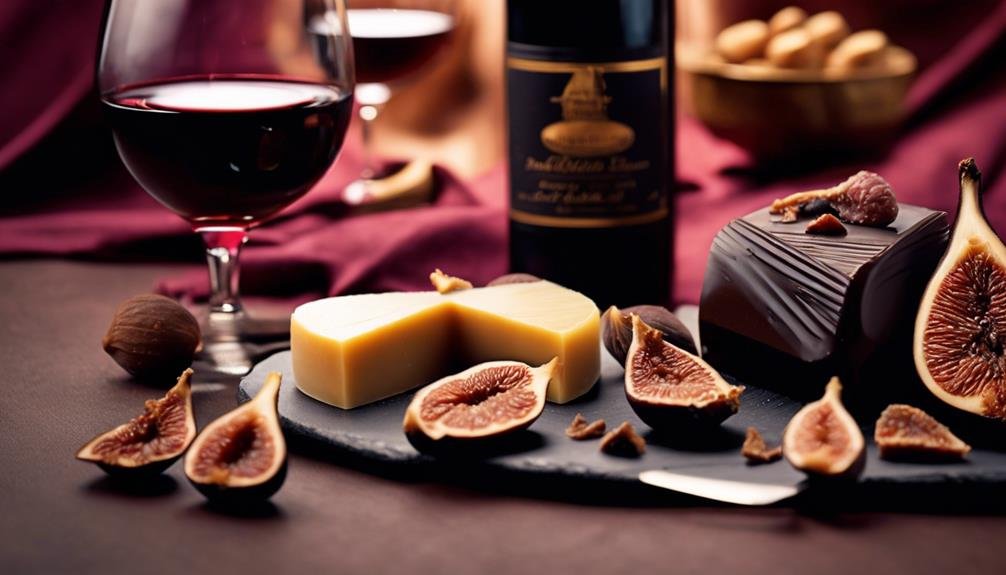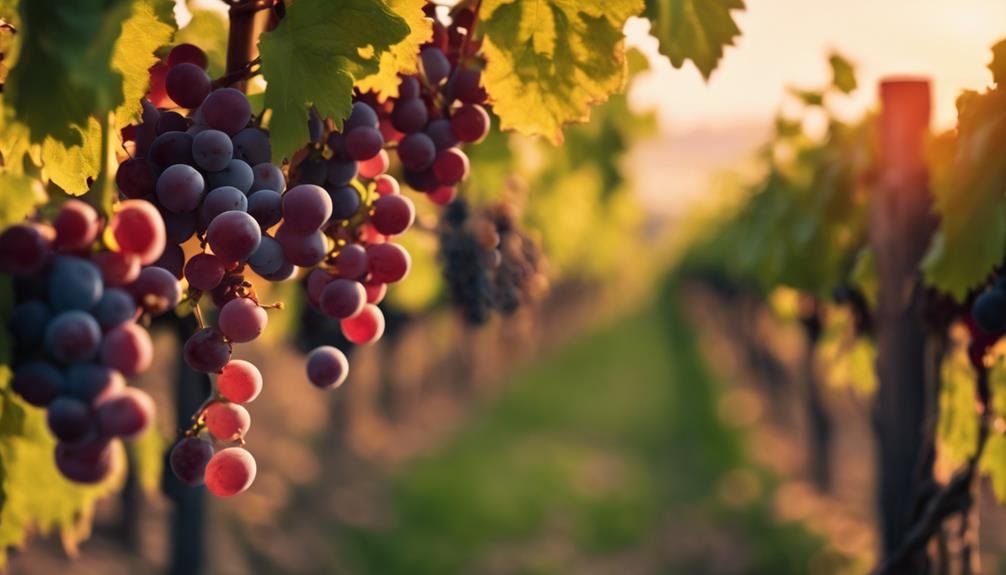Discover Amarone wine's exquisite reveal from grape to liquid gold. Veneto's winemaking legacy, appassimento process, and terroir intricacies define its uniqueness. Amarone's flavors and sugars are heightened through grape drying, resulting in a velvety texture and high alcohol content. Terroir influences, including soil, microclimate, and sunlight, craft its rich, full-bodied profile. With proper aging, the wine reveals its full potential, offering a sensorial journey worth savoring. Pair this liquid gold with hearty dishes, aged cheeses, or decadent desserts to enhance its complexity. Uncover the artistry and tradition behind Amarone for an unparalleled wine experience.
Historical Evolution of Amarone Wine
In tracing the historical evolution of Amarone wine, one cannot overlook the profound impact of traditional winemaking practices in the Veneto region of Italy. The cultural significance of these methods has shaped the unique identity of Amarone over the centuries.
Evolutionary techniques such as appassimento, the process of drying grapes before fermentation, have been integral to the production of this renowned wine. This practice not only concentrates the flavors and sugars in the grapes but also imparts a distinctive richness and complexity to the final product.
The meticulous attention to detail and respect for tradition in Amarone winemaking highlight the deep-rooted connection between the land, the people, and the wine itself. This historical journey showcases the time-honored artistry and craftsmanship that continue to define Amarone as a symbol of Italian winemaking excellence.
The Art of Appassimento Process
A pivotal element in the creation of Amarone wine, the meticulous artistry of the appassimento process imbues the grapes with concentrated flavors and sugars, elevating the final product to a level of unparalleled richness and complexity.
This Appassimento technique involves carefully selecting ripe grapes, traditionally Corvina, Corvinone, and Rondinella, and drying them on straw mats or in ventilated rooms for several months. Grape drying traditions, passed down through generations, play an essential role in this process, allowing the grapes to lose moisture while intensifying their sugars and flavors.
The result is a unique wine with a rich, full-bodied profile and a high alcohol content, characteristic of Amarone wines. The appassimento method is fundamental in achieving Amarone's distinct flavor profile and velvety texture.
Terroir Influence on Amarones Flavor

The essence of place, known as terroir, exerts a significant impact on the flavor profile of Amarone wines, influencing their unique characteristics and taste complexities. Soil composition plays an essential role in shaping the grapes that go into Amarone production. The varying levels of nutrients, drainage capabilities, and pH levels in the soil can affect the grapevines' growth and the flavors they develop.
Additionally, the microclimate impact, which includes factors like temperature, sunlight exposure, and humidity, further contributes to the grape's ripening process and flavor development. These environmental factors combine to create a distinct terroir for Amarone wines, resulting in the rich, full-bodied flavors and complex aromas that connoisseurs appreciate.
Aging Potential and Cellar Tips
Exploring the maturation capabilities and storage strategies for Amarone wines reveals important insights into maximizing their aging potential and preserving their distinct characteristics.
To enhance the aging potential of Amarone wines, consider cellar strategies that involve storing bottles in a cool, dark, and humid environment to prevent premature aging. Proper aging techniques include laying the bottles on their sides to keep the cork moist and using specialized wine racks to minimize disturbances.
It is recommended to age Amarone wines for at least five to ten years to allow the flavors to develop fully. By following these cellar tips and aging techniques, Amarone wines can reach their peak complexity and offer an exceptional tasting experience for wine enthusiasts.
Amarone Wine Pairing Recommendations

Enhancing the enjoyment of Amarone wine involves thoughtfully considering ideal food pairings that complement its rich and full-bodied flavor profile. When looking to pair Amarone wine, consider the following recommendations:
- Hearty Dishes: Amarone's robust flavors pair well with hearty dishes like braised short ribs or beef stew.
- Aged Cheeses: The complex and intense flavors of aged cheeses such as Parmigiano-Reggiano or Gorgonzola complement Amarone's bold profile.
- Chocolate Desserts: The wine's notes of chocolate and brown sugar make it a perfect match for indulgent chocolate desserts like flourless chocolate cake or chocolate mousse.
Pairing Amarone wine with these foods enhances the overall tasting experience, creating a harmonious balance between the wine's flavor profiles and the dishes served.
Frequently Asked Questions
How Does Amarone Wine Compare to Other Italian Red Wines?
Amarone wine, compared to other Italian reds, stands out for its unique production method of using dried grapes, resulting in a rich, full-bodied flavor profile. Regional differences, grape varieties, taste comparisons, and its exceptional aging potential contribute to its distinctive character.
Are There Any Sustainable Practices Used in Amarone Wine Production?
Sustainable practices are increasingly embraced in Amarone wine production to minimize environmental impact. Wineries focus on organic farming, water conservation, and energy efficiency. By adopting these measures, Amarone producers aim to preserve the land for future generations.
Can You Recommend Specific Amarone Wine Producers for Beginners?
For beginners seeking Amarone wine, consider exploring Allegrini, Tommasi, and Sartori. Their Amarone wines are known for rich tasting notes of cherry liqueur, black fig, and cinnamon, making them ideal to pair with hearty dishes and aged cheeses.
What Impact Does Oak Aging Have on the Flavor Profile of Amarone?
Oak aging in Amarone wine enhances its flavor profile by imparting tannins and complex aromas. This process extracts nuances of vanilla, spice, and toast, adding depth and structure. Melding fruit intensity with oak influence creates a harmonious balance in the wine.
Is There a Specific Temperature Range for Serving Amarone Wine?
Ideal temperature for serving Amarone wine ranges from 60-65°F. To enhance its flavors, decant the wine before serving. Use large glasses to allow proper aeration. Enjoy this rich, full-bodied wine with hearty dishes, aged cheeses, and chocolate desserts.
Conclusion
To sum up, Amarone wine symbolizes the divine transformation of grapes into liquid gold, embodying centuries of winemaking tradition and expertise. Its complex flavors and age-worthy characteristics showcase the artistry and dedication of producers in the Veneto region.
With a focus on terroir, appassimento process, and aging potential, Amarone offers a truly unique and sophisticated tasting experience for wine enthusiasts worldwide.
Savor the richness and depth of Amarone, a true gem in the world of fine wines.
